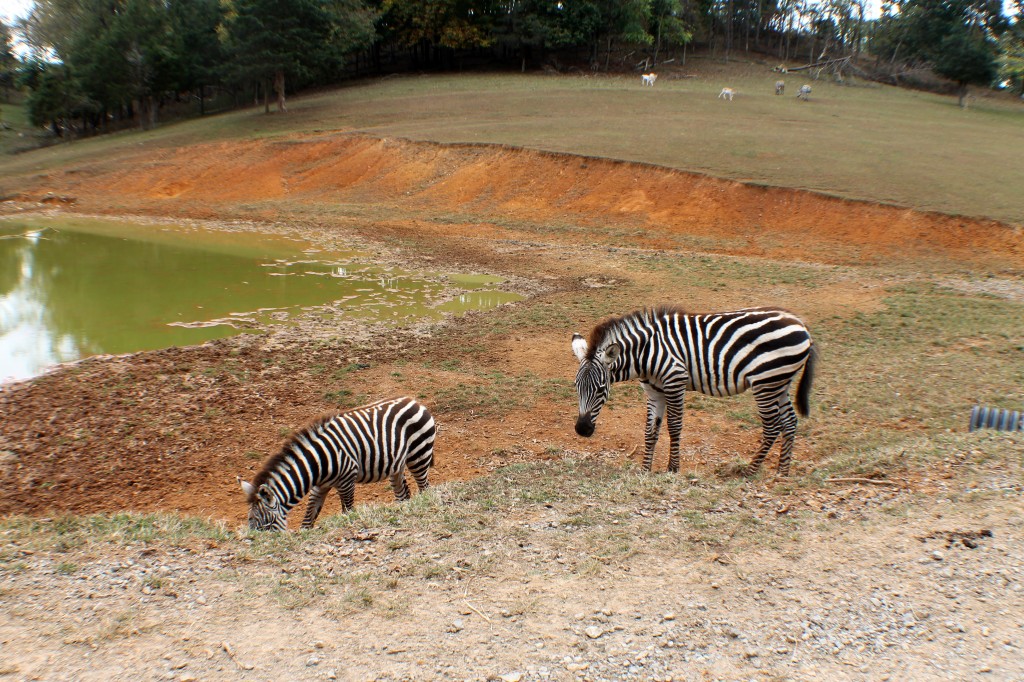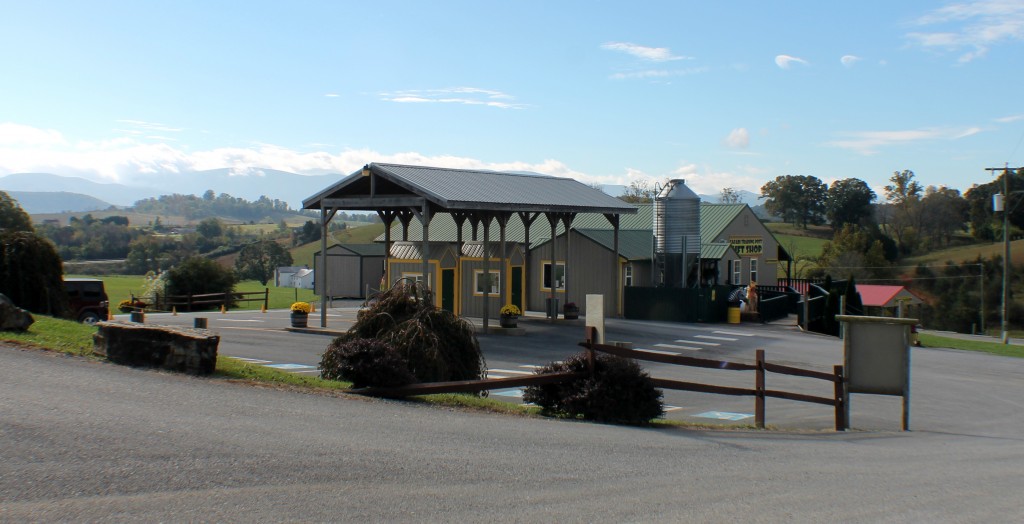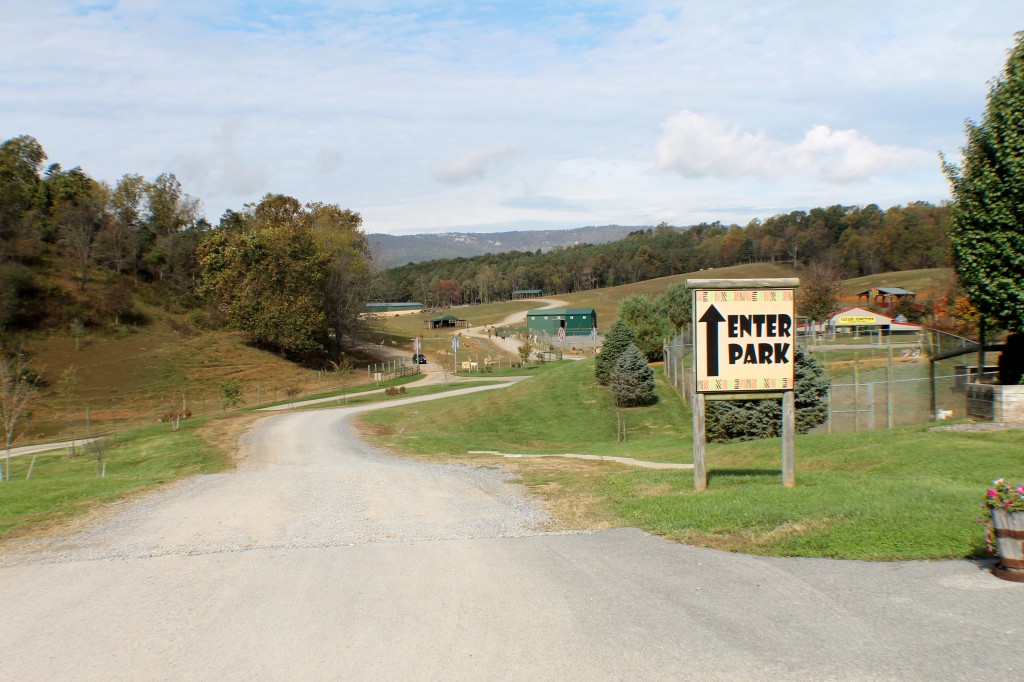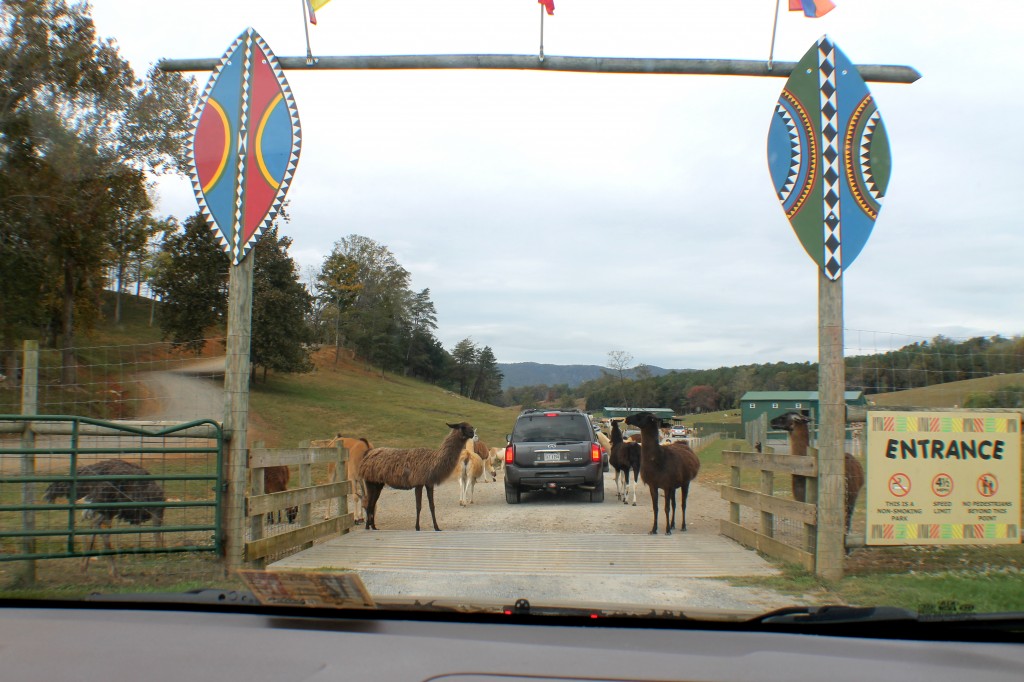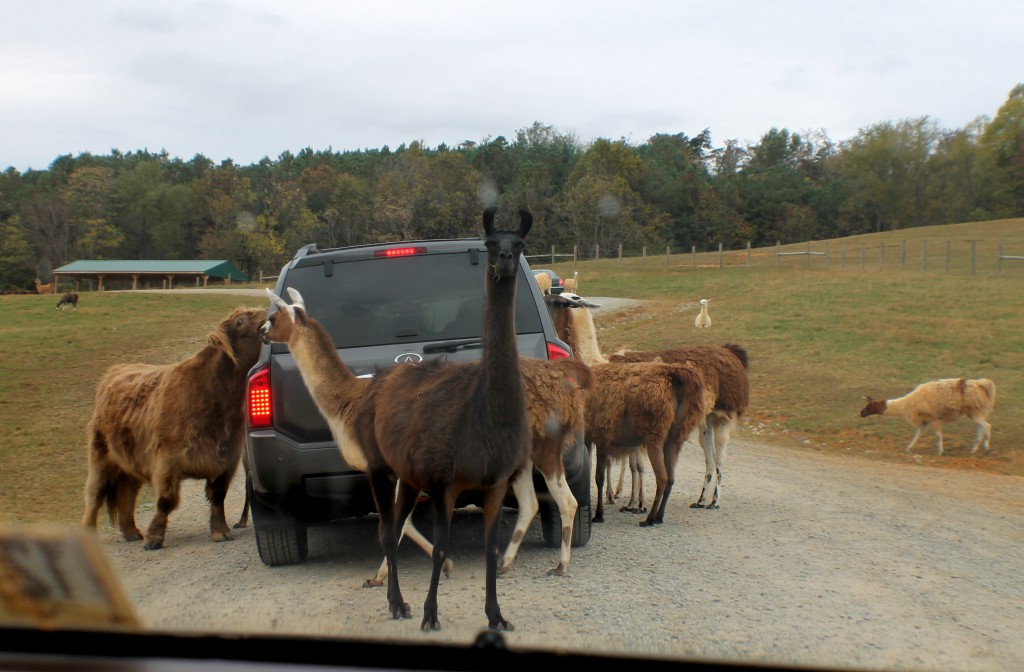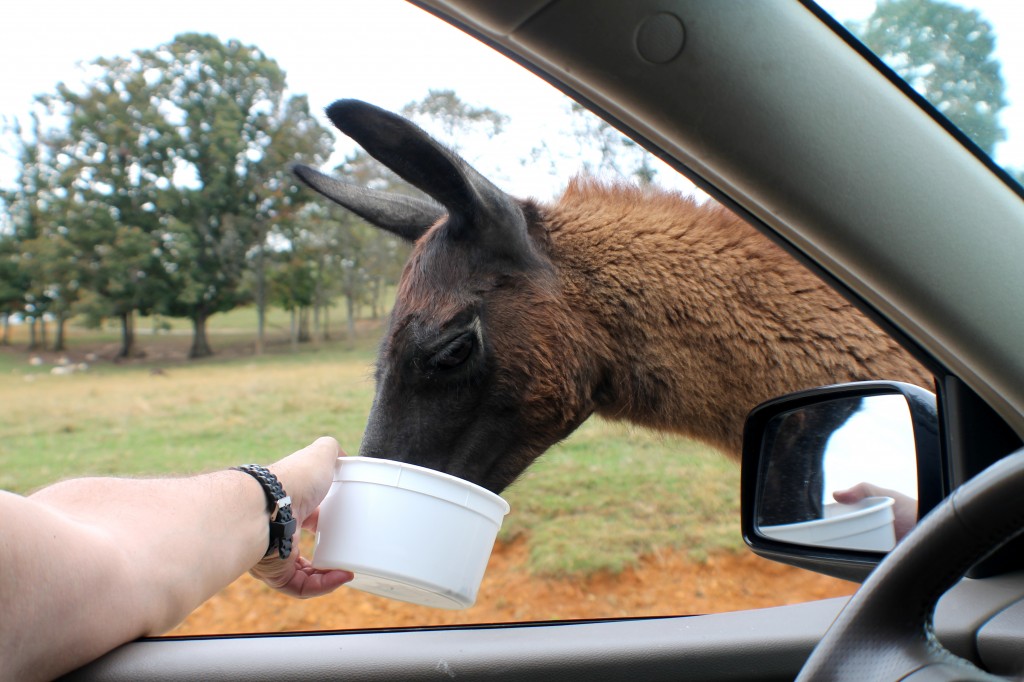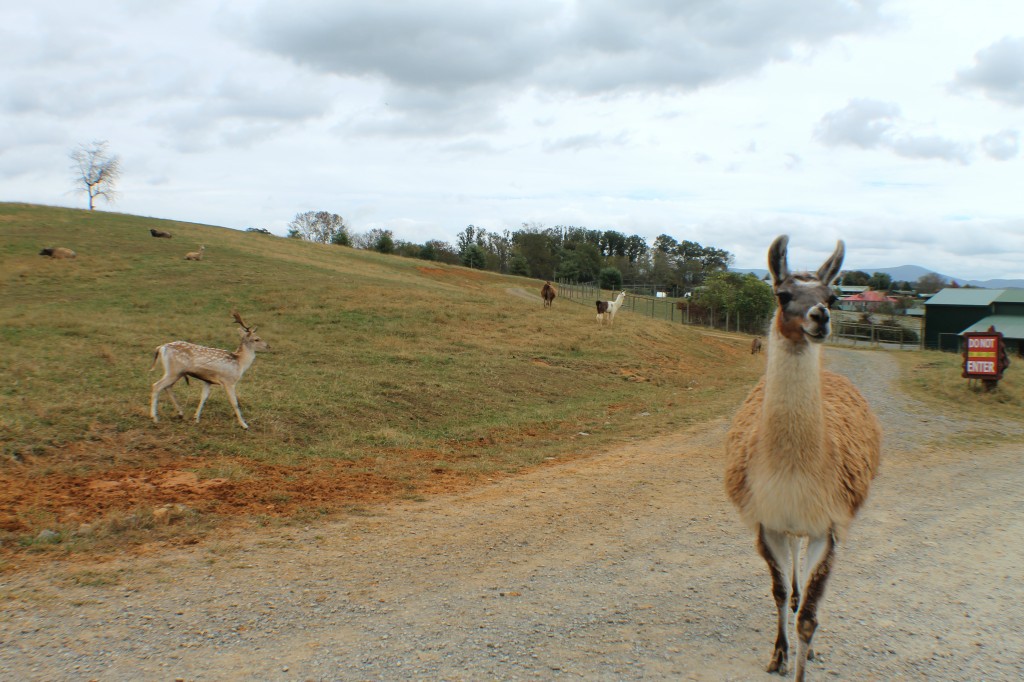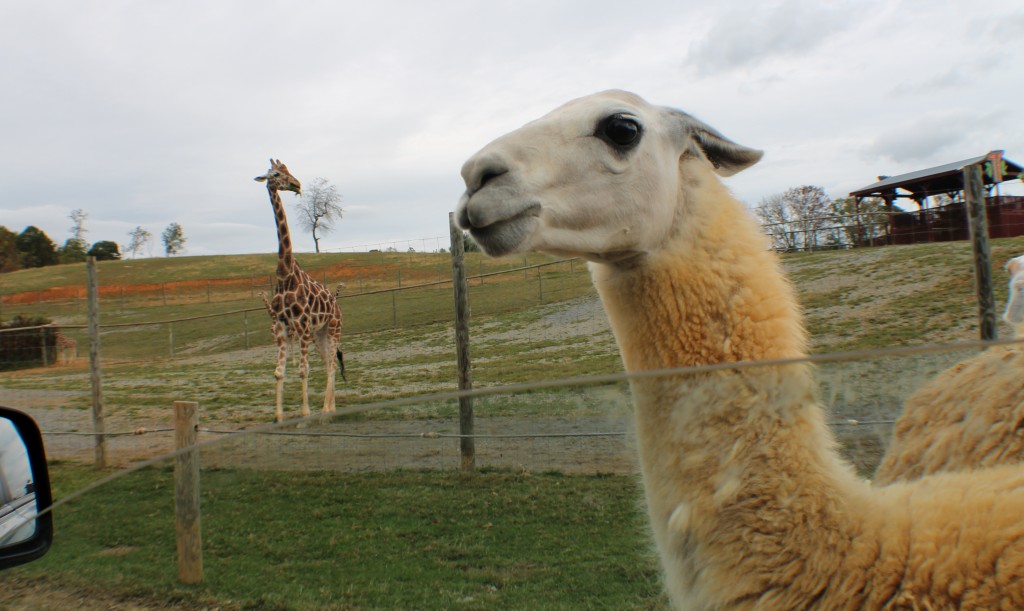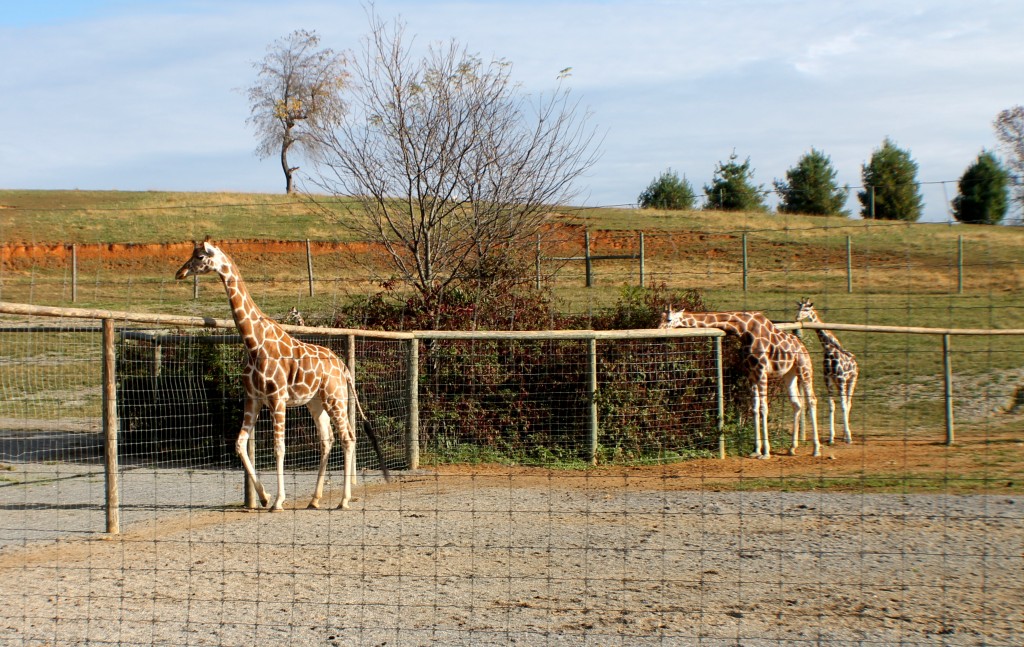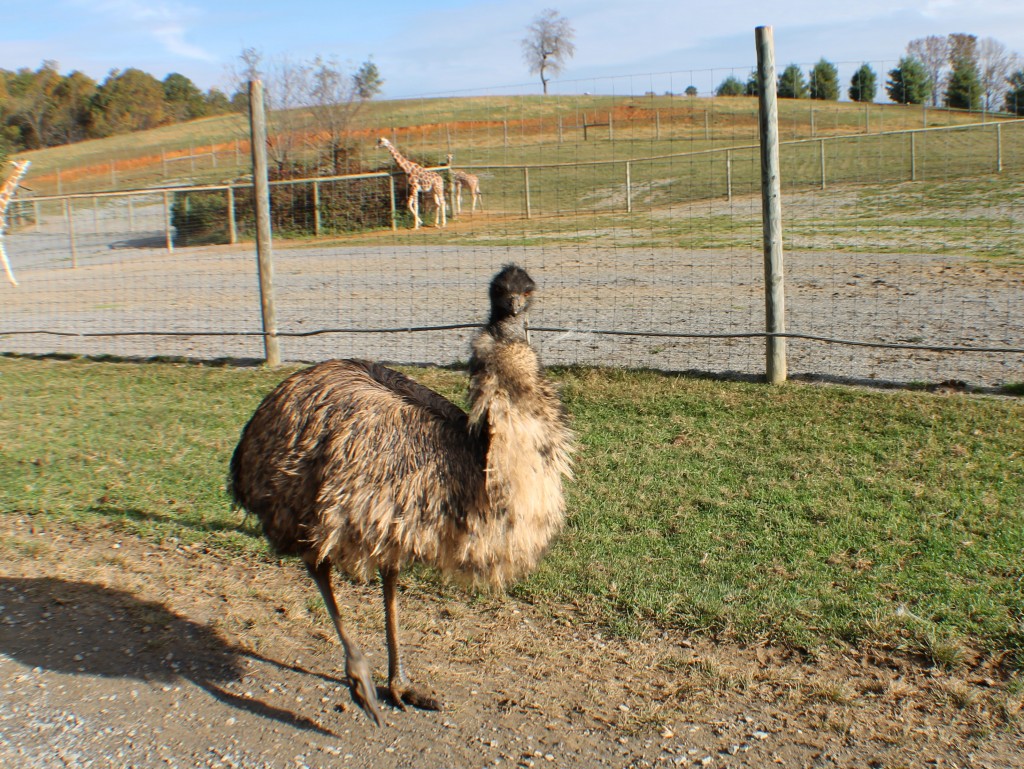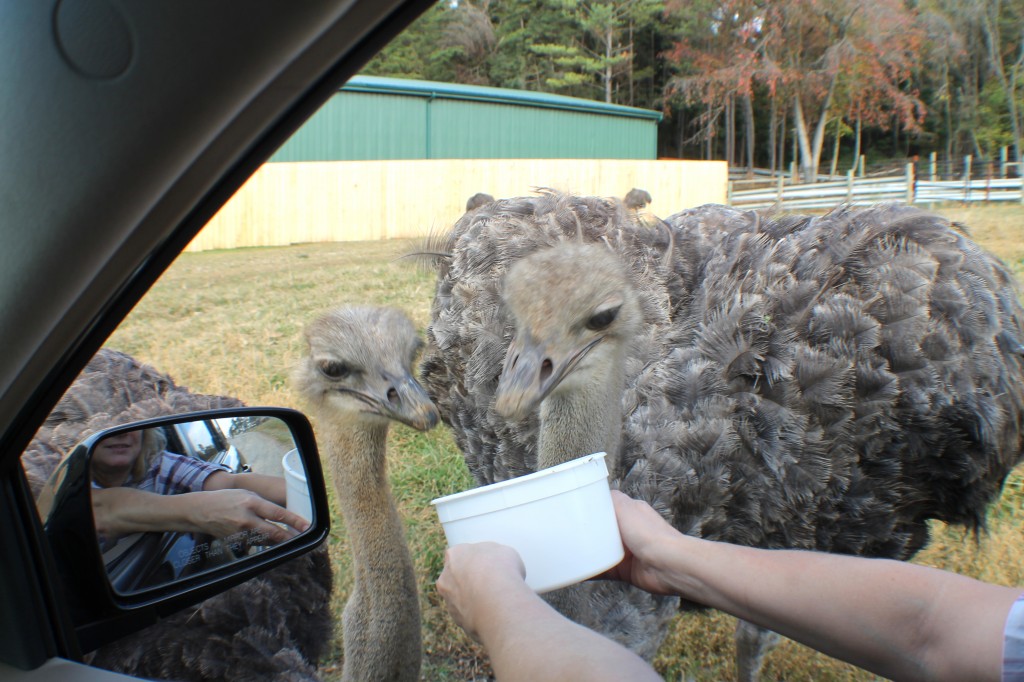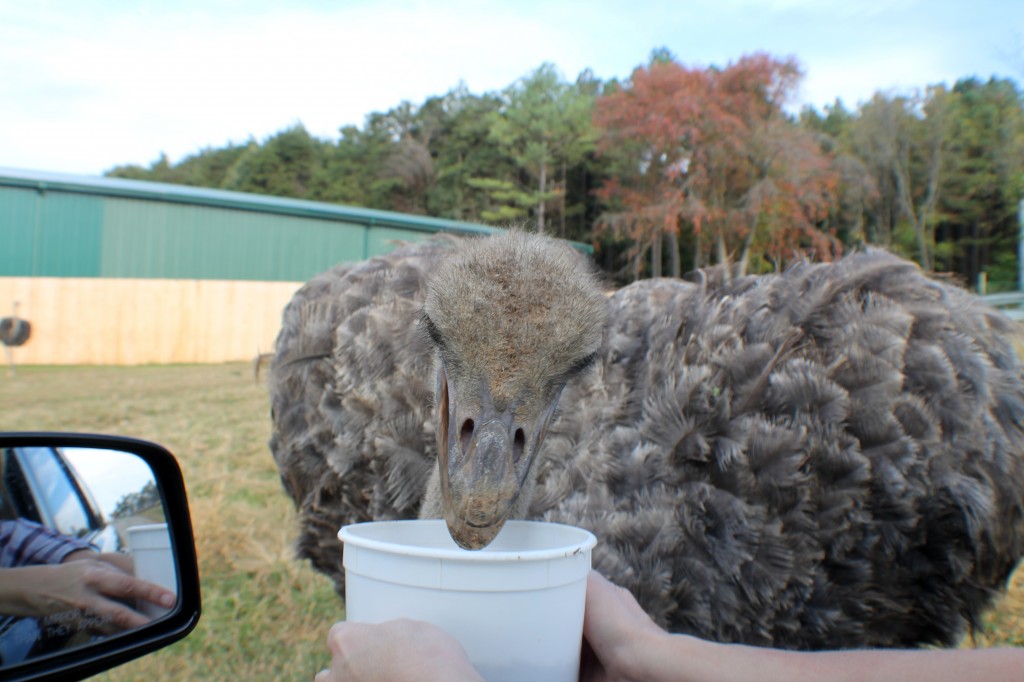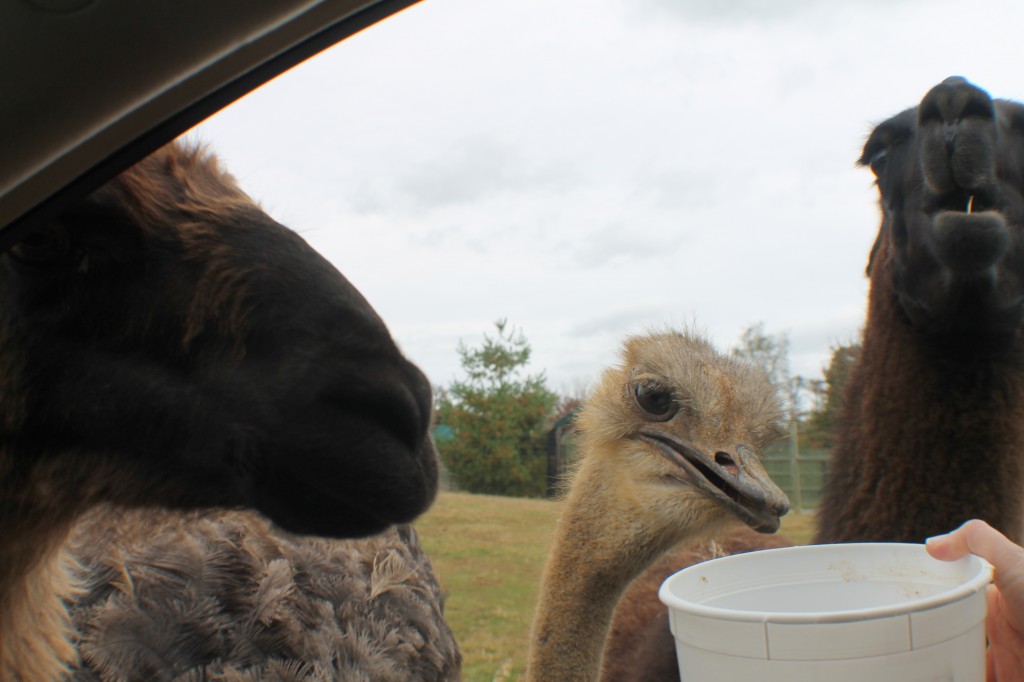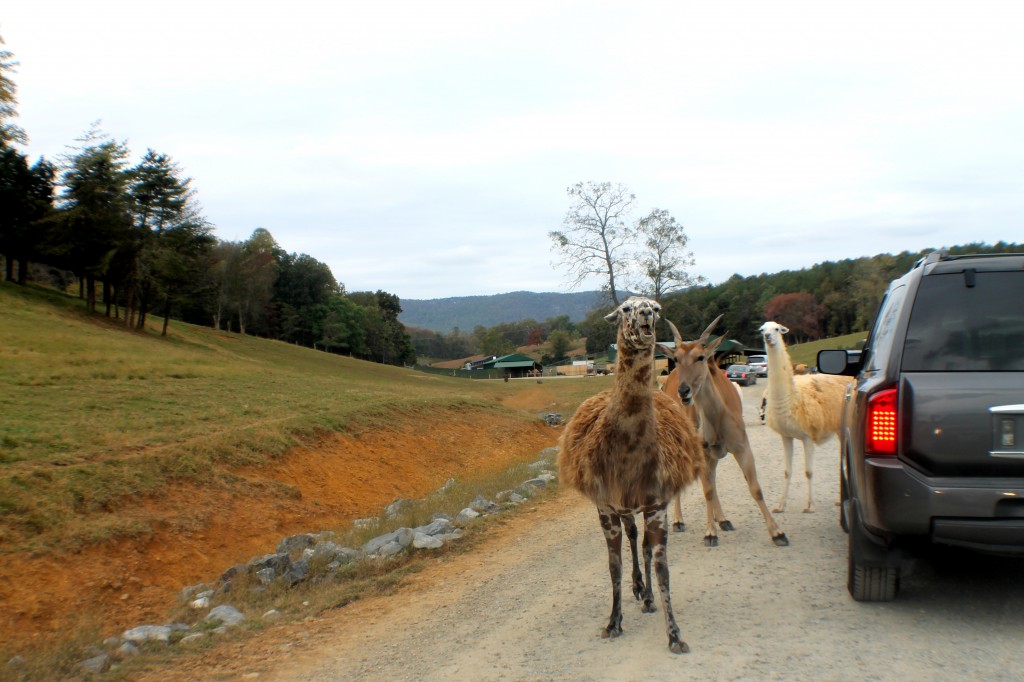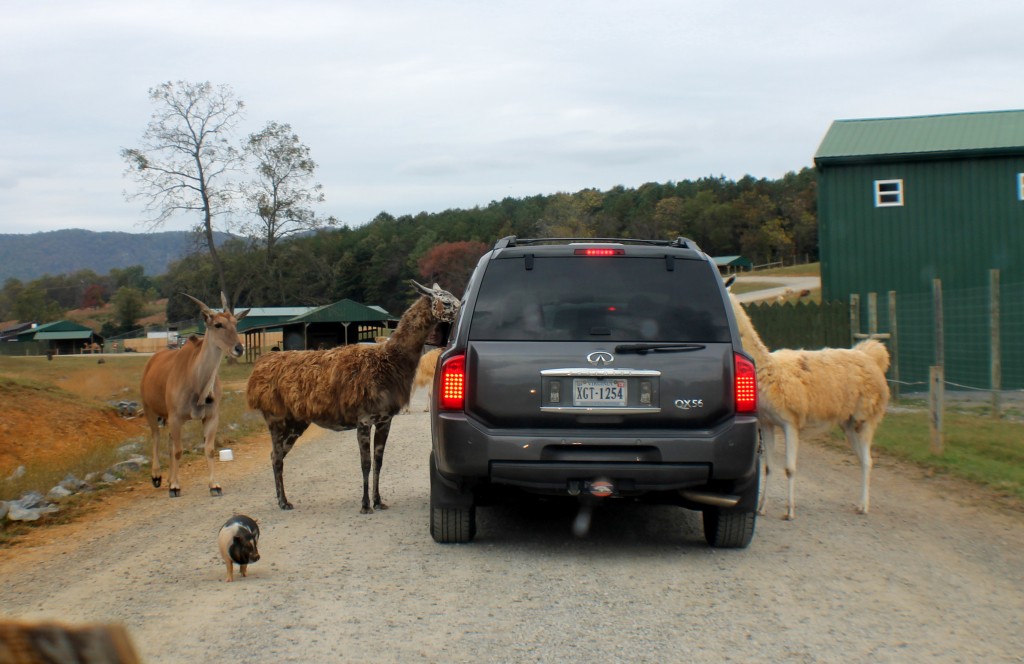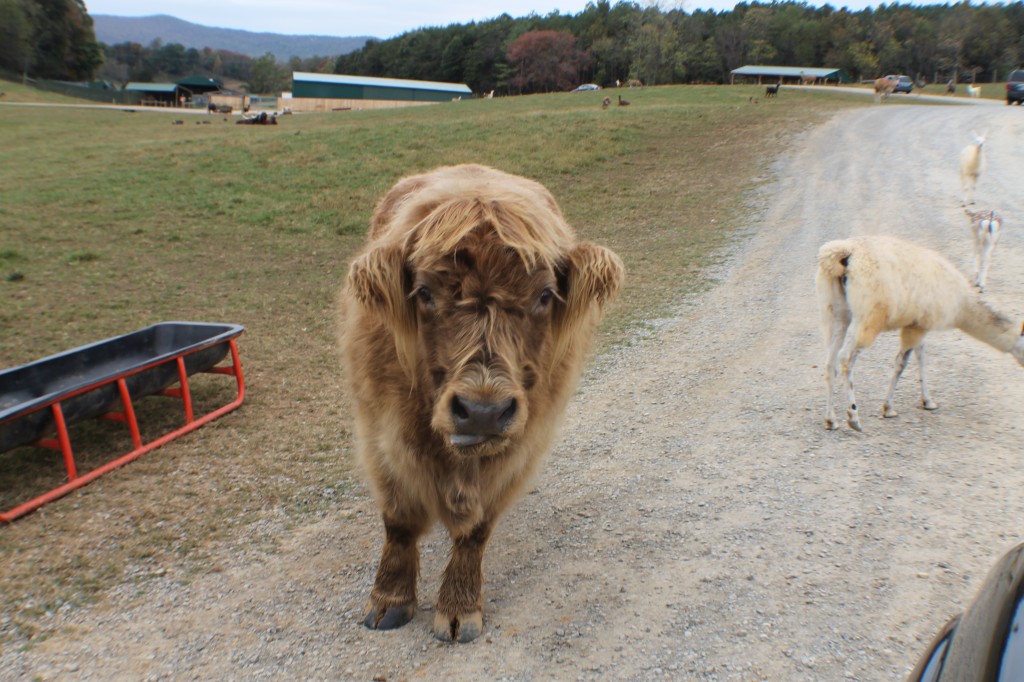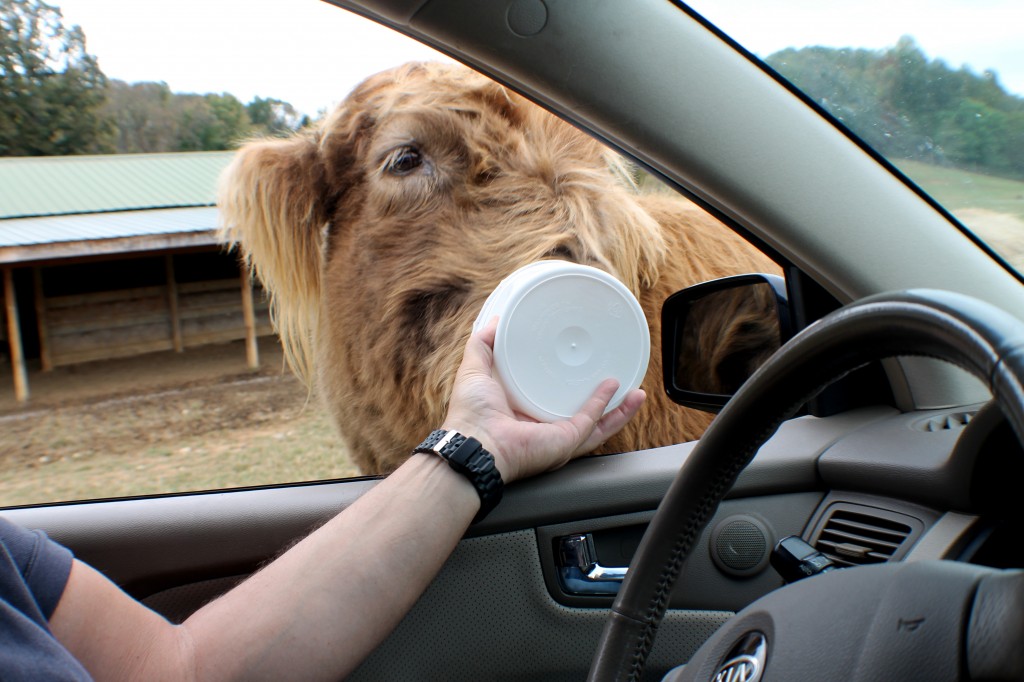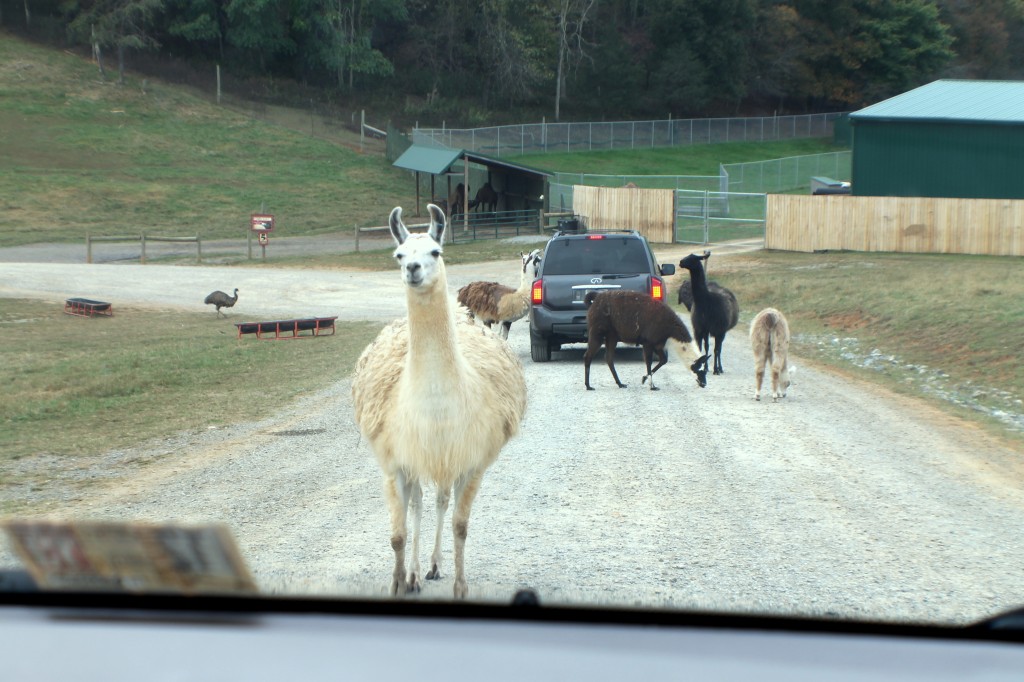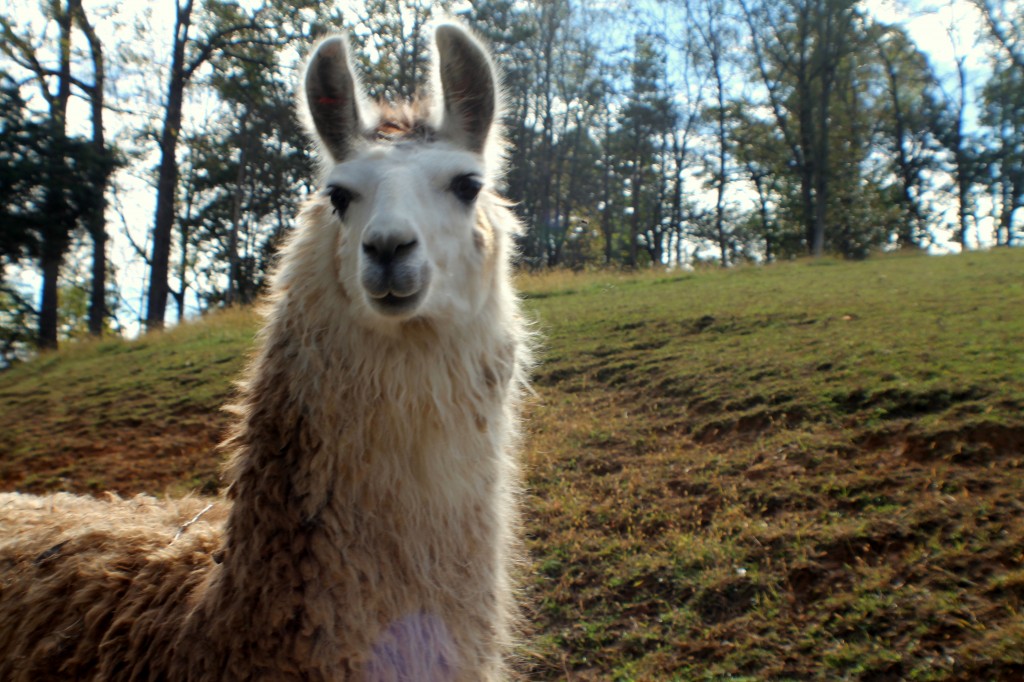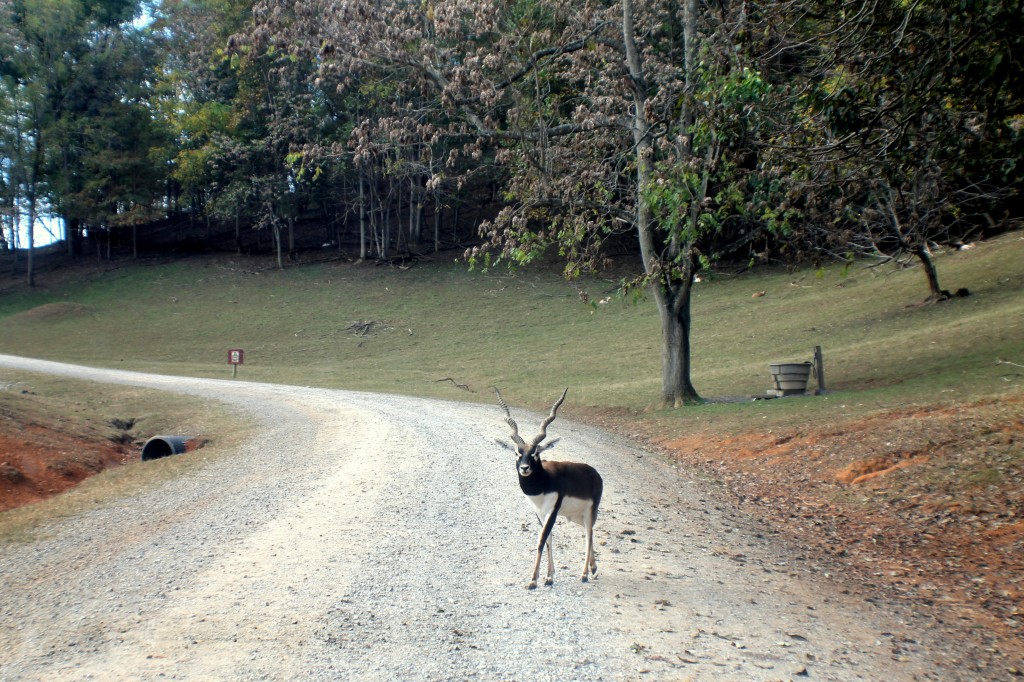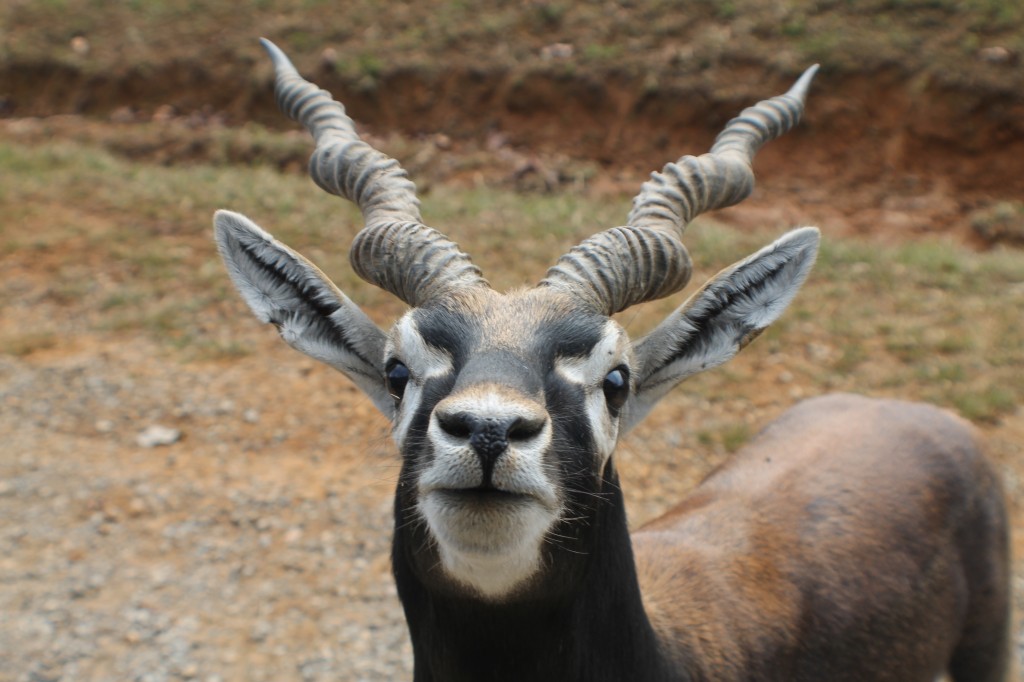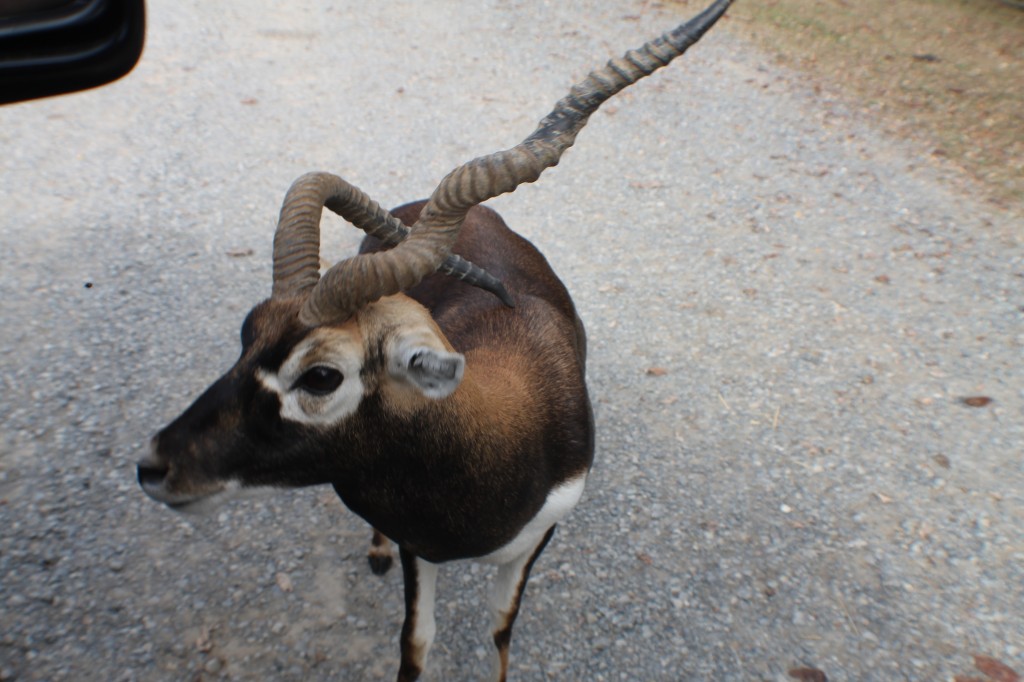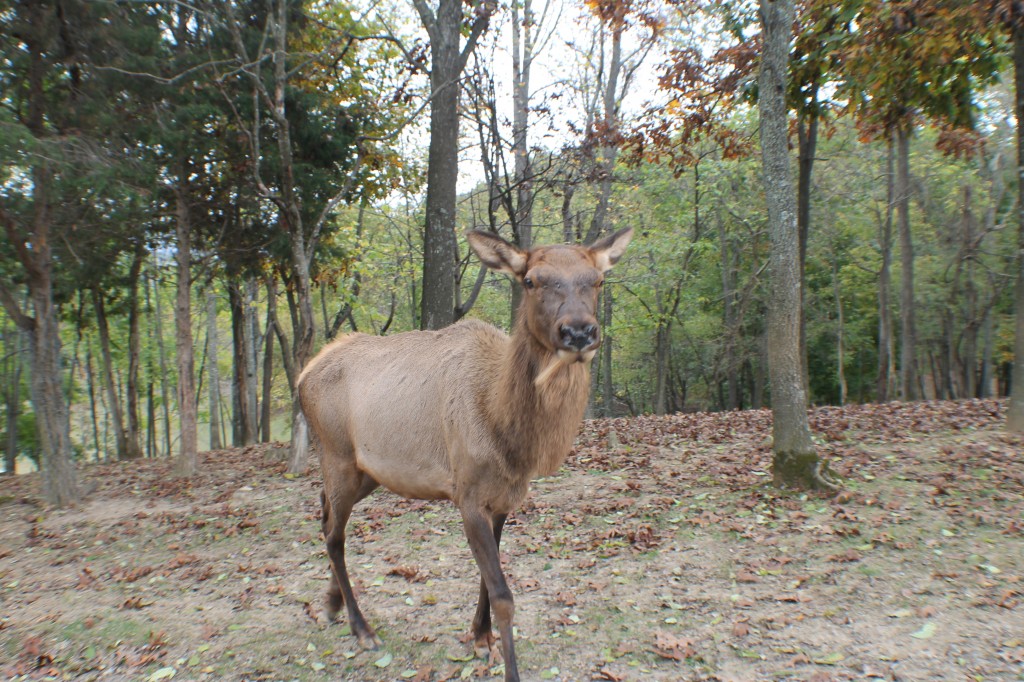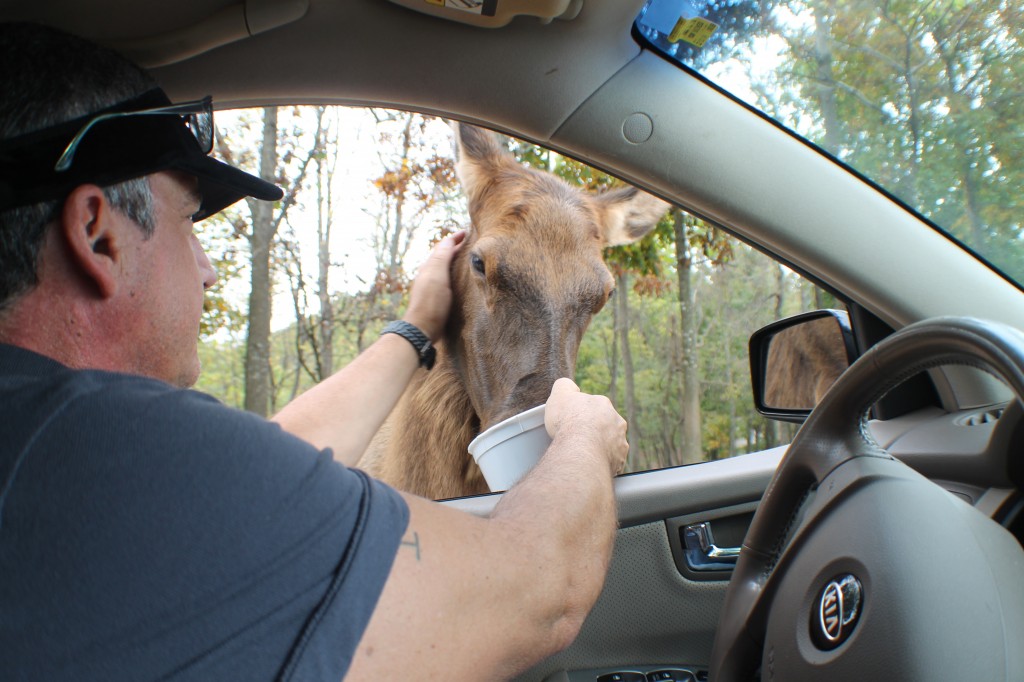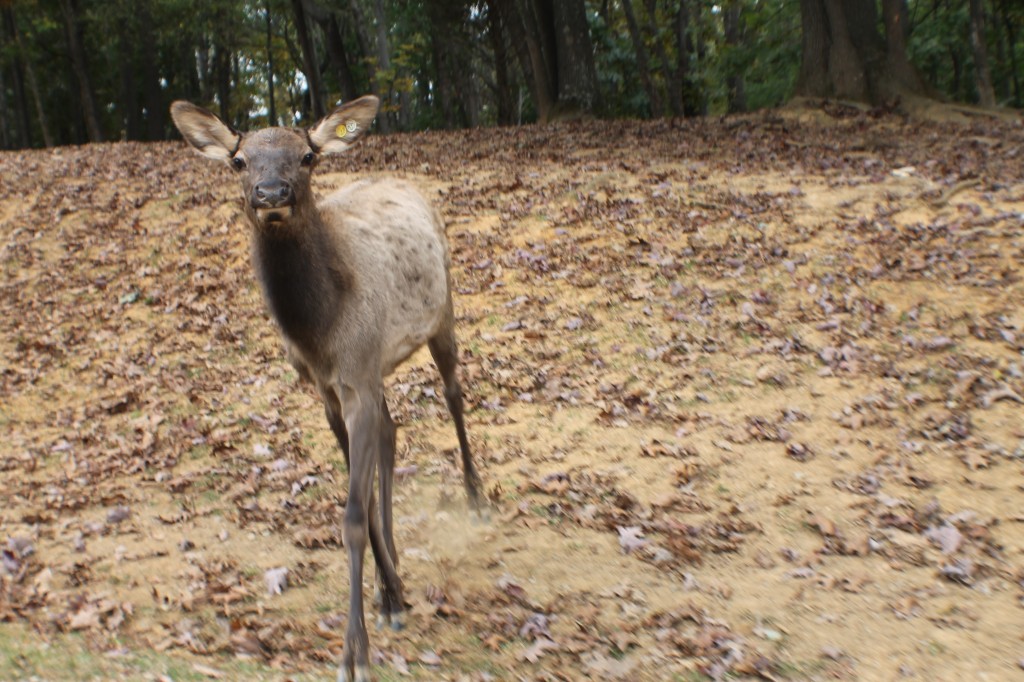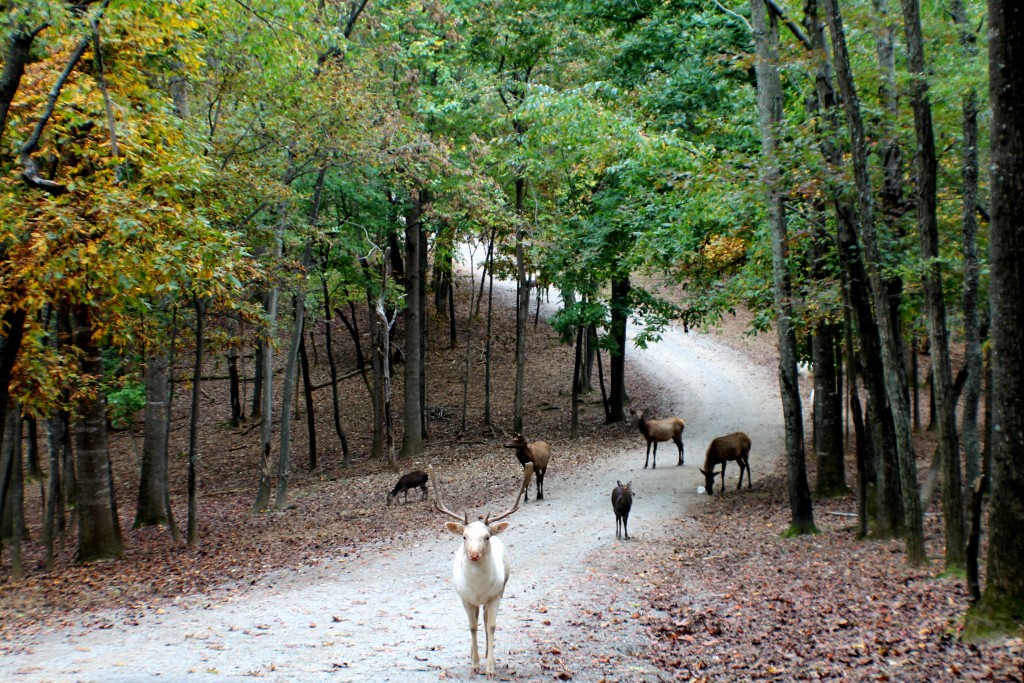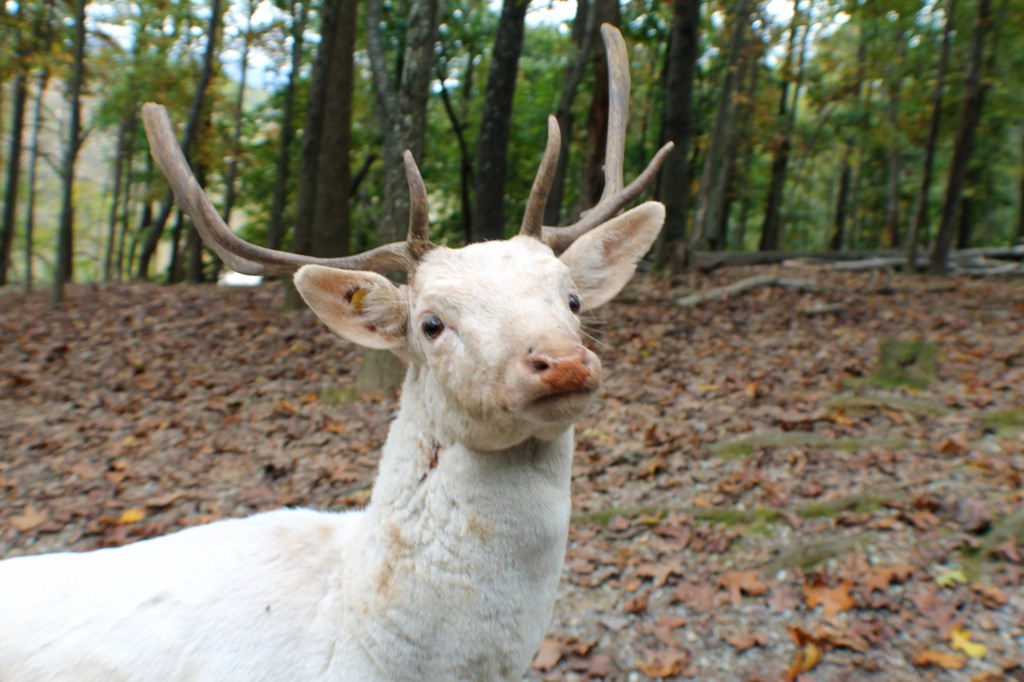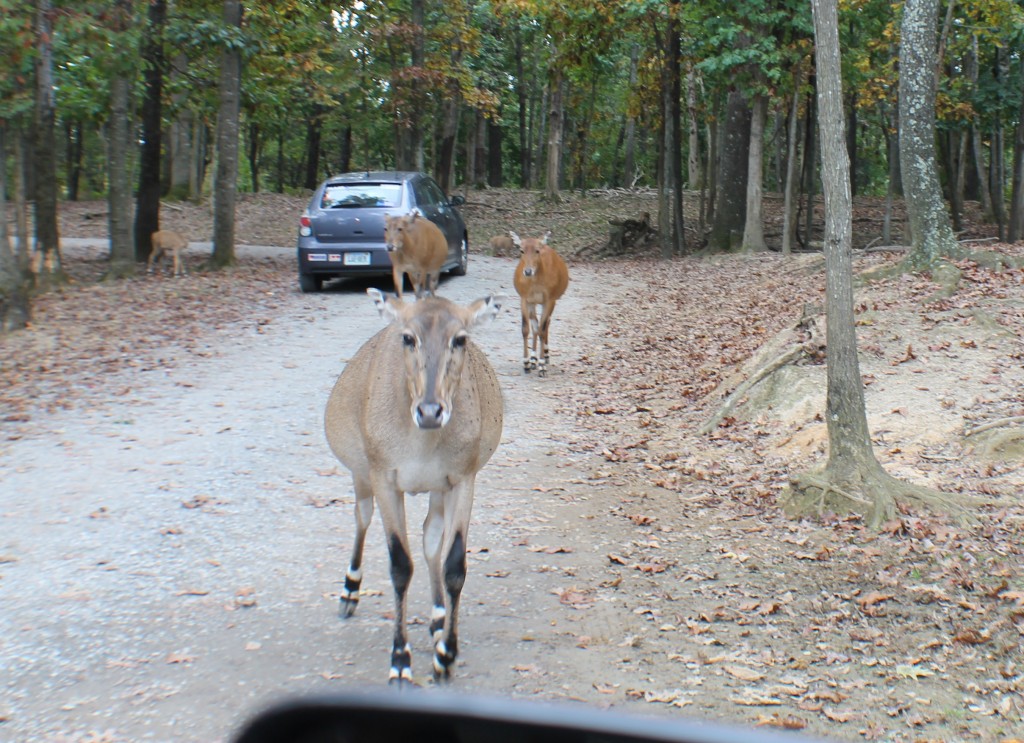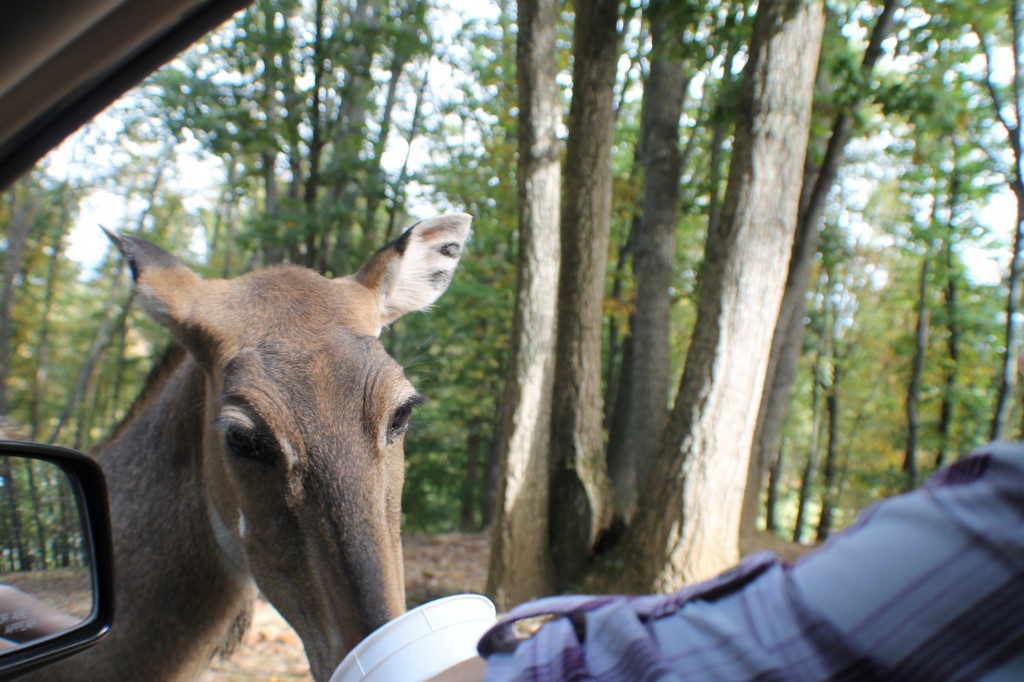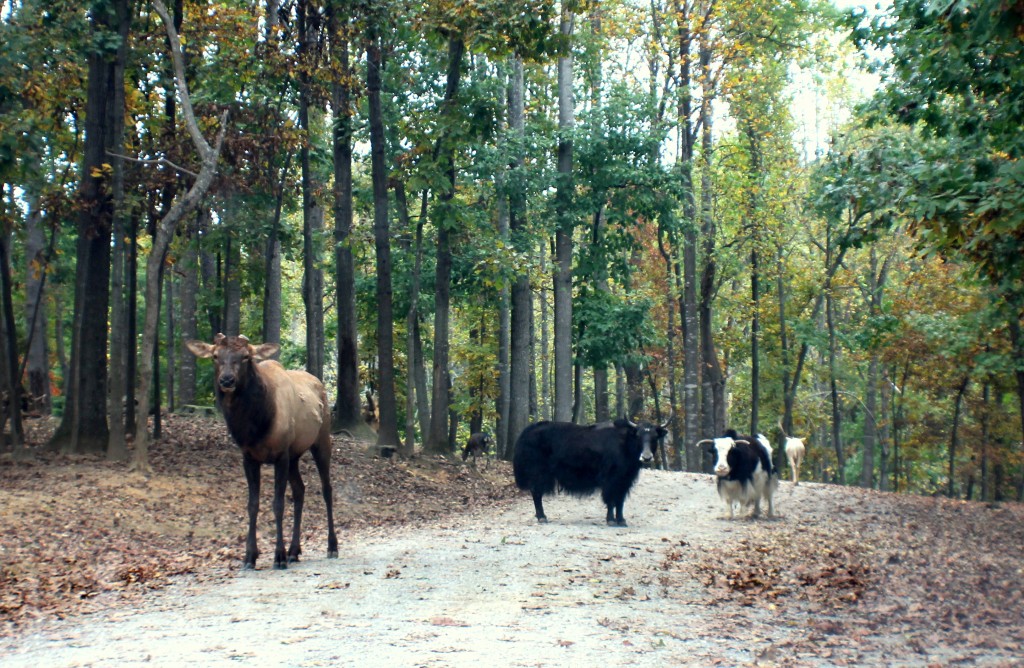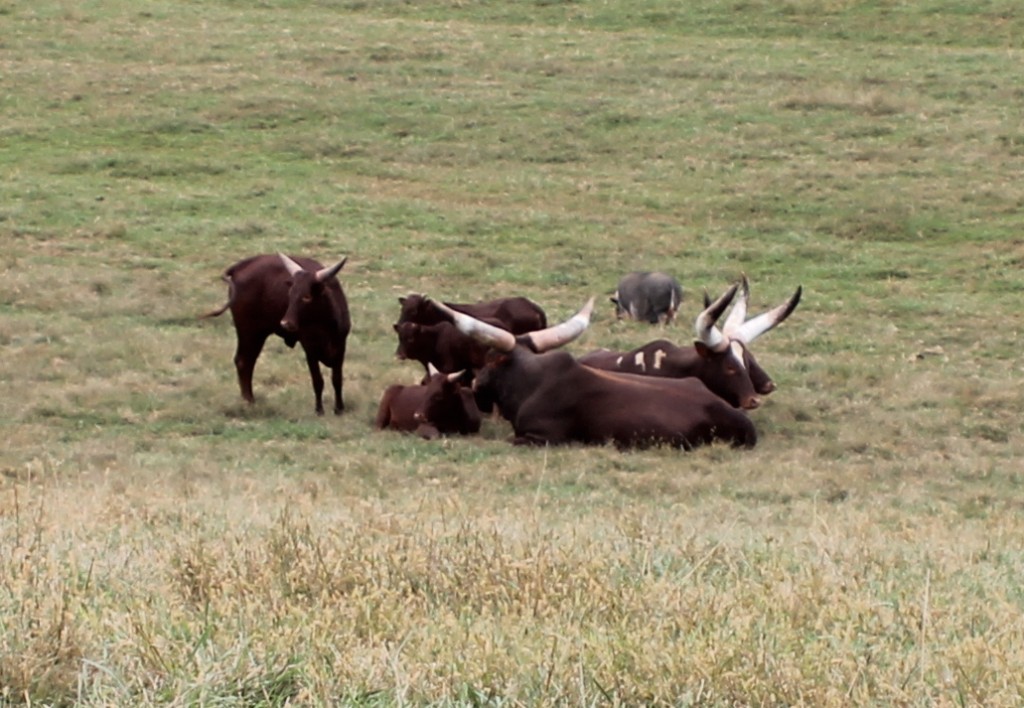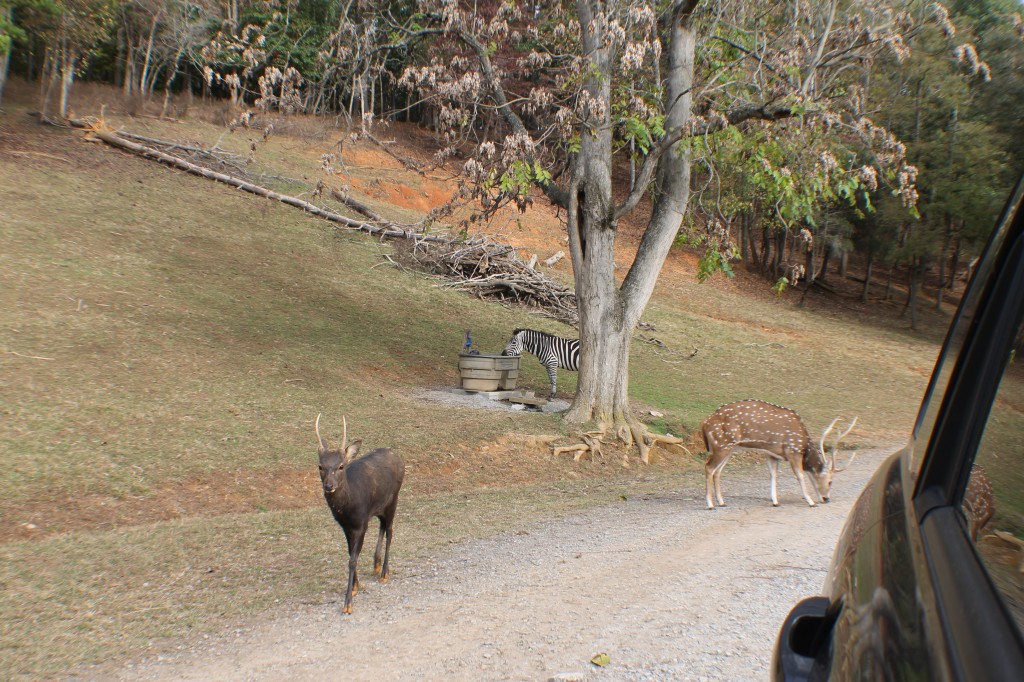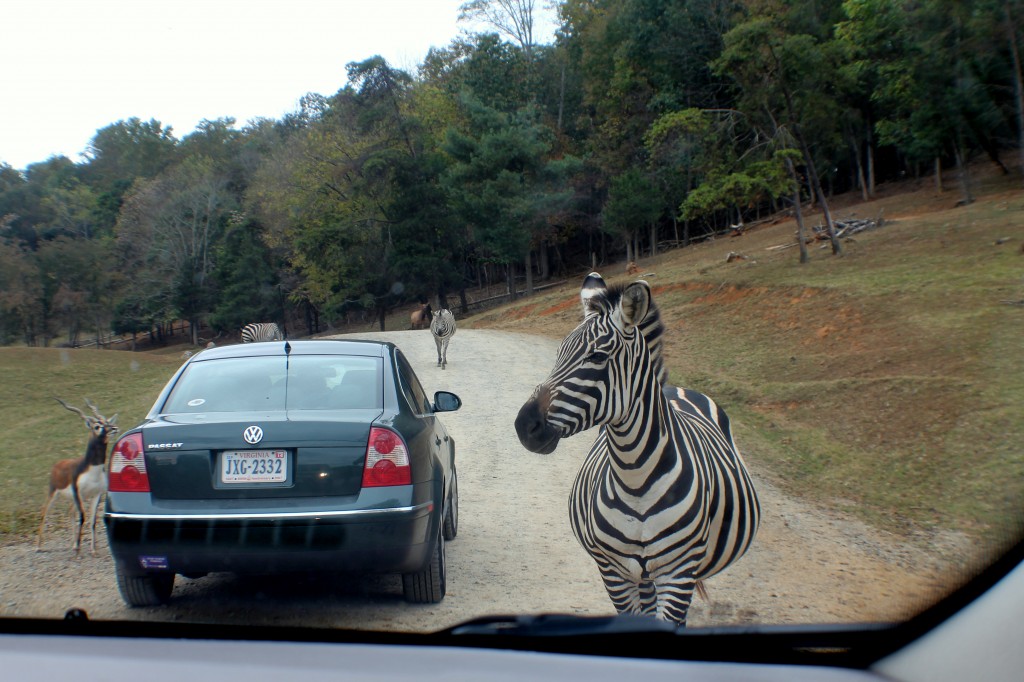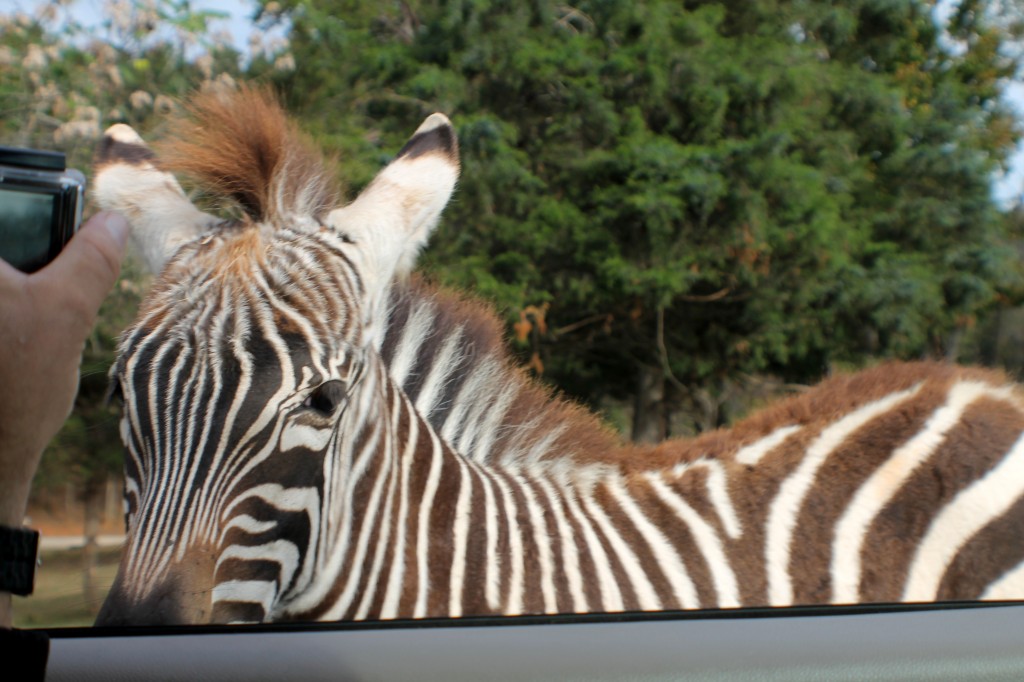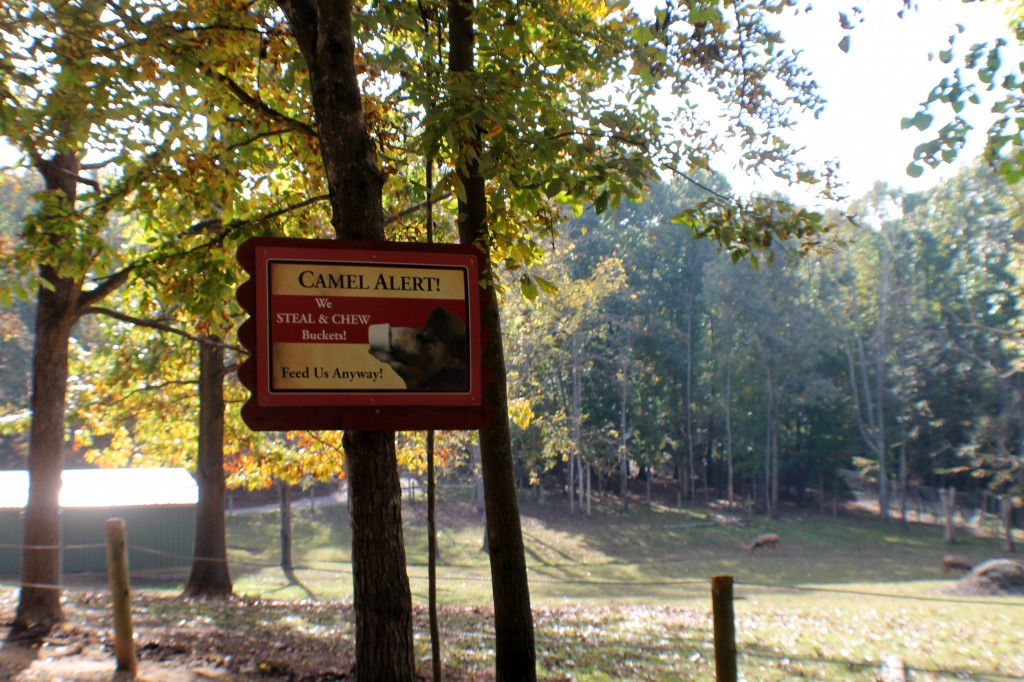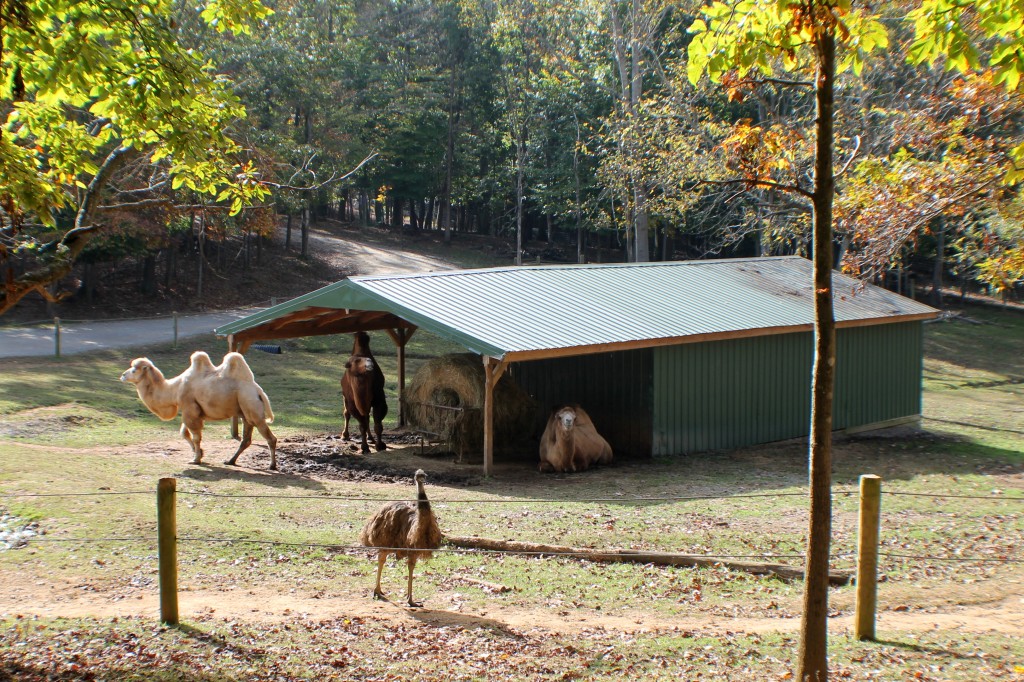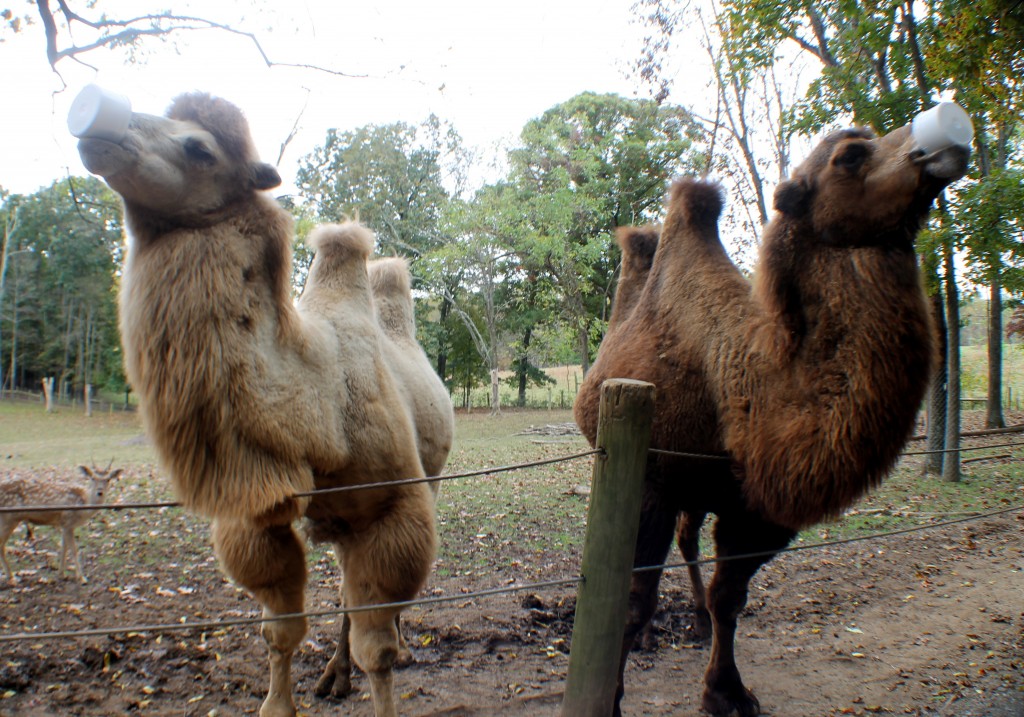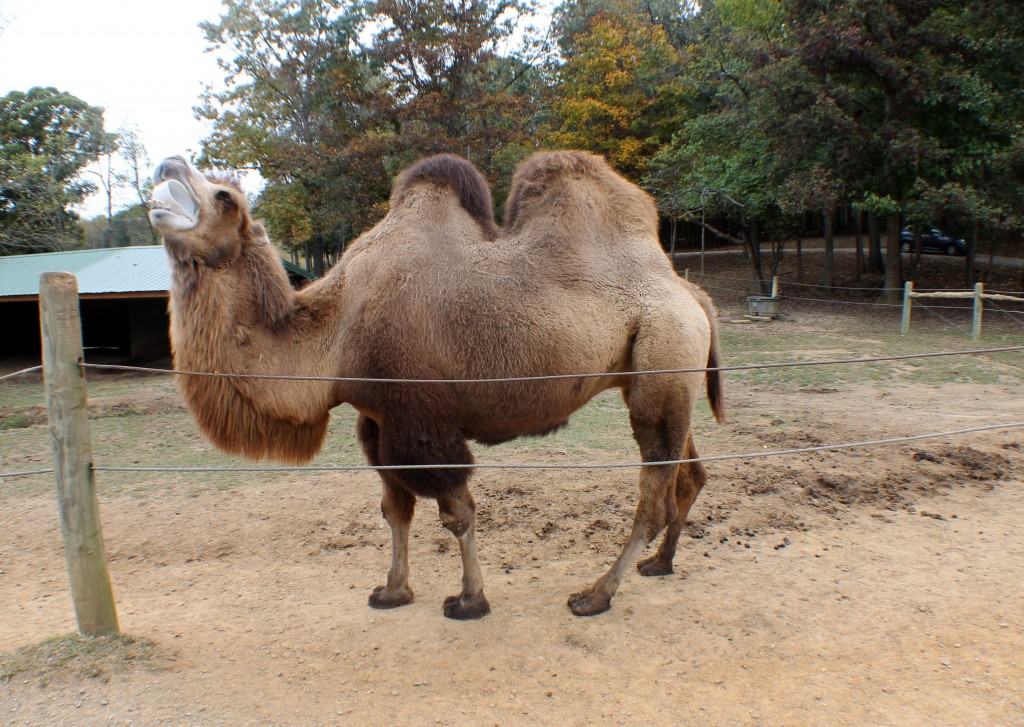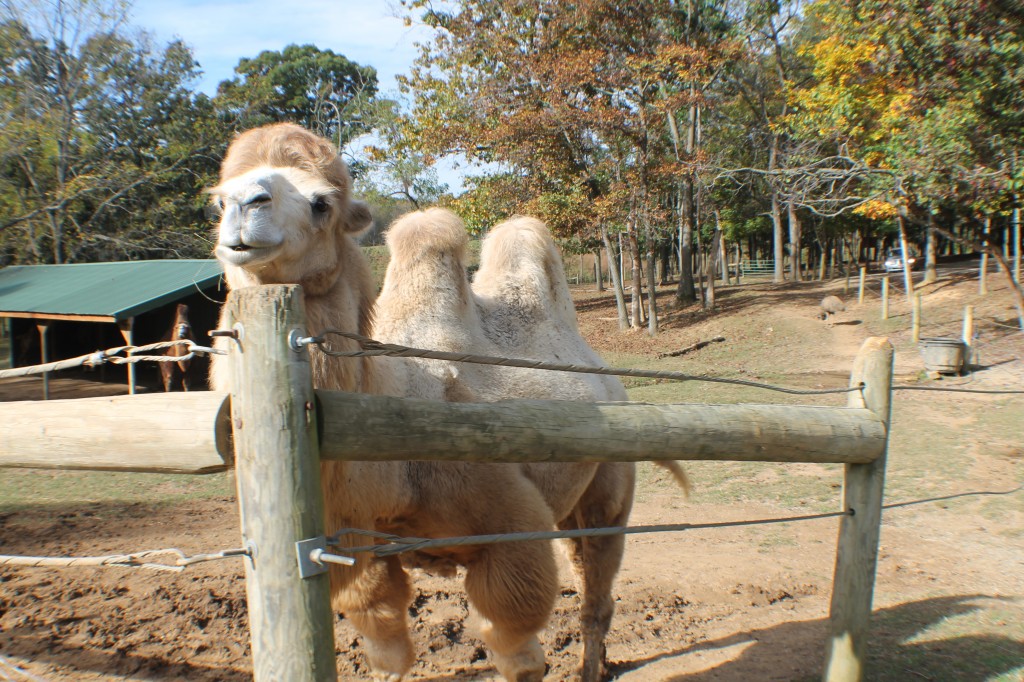Virginia Safari Park is a wonderful 180 acre drive through adventure. The Park is divided into two sections: The Safari and The Village. This post is about our experience in the Safari Park, which is 3 miles of winding roads and has hundreds of free roaming animals that we could see or feed from our vehicle.
There are many baby animals! Virginia Safari Park has over 100 babies born each year. We were ready to see every one of the herds of Zebra, Bison, Elk, Antelope, Deer, Ostrich and Llamas. Pictures, Pictures, Pictures!
We purchased the admission tickets and several buckets of animal food at the Park’s entrance, which is adjacent to the gift shop.
A very short drive took us to the Safari park ahead.
Animals, mostly llamas, were waiting for us right beyond the entrance.
Llamas are beautiful and gentle animals. Some of them weren’t even hungry at the time.
The giraffes were eating something under the fence netting. The park also has a giraffe feeding station at the Village.
An Emu bird was just standing near the giraffe station.
The Ostriches seemed to be hungry. We had some fun feeding them from the bucket.
More and more animals appeared on the road.
I had to look into Wikipedia to find out what kind of animal it is. This is a Red Highland cow, a Scottish breed of cattle with long horns and long wavy coats. Highland cattle’s hair gives protection during the cold winters. She is so cute and gentle. 🙂
So many different kinds of llamas approached our vehicle.
Then, we met a Blackbuck antelope on the road.
And fed him.
Later on, we fed the blackbuck with a banded horn. He looked funny.
Dave is feeding a very nice young moose.
A cute baby moose, I think.
A little white deer.
My guess, this is a Nilgai Antelope.
A couple yaks among other animals.
Watusis were lying down peacefully on the grass and had no desire to come up to the car.
Here are a zebra, a black deer and a Sika deer, also known as a Spotted or Japanese deer, which is native to much of East Asia.
The zebras look beautiful. We were instructed not to feed them though.
We are approaching a camel station. The Camel Alert sign below made us laugh: “We steal & chew buckets! Feed us anyway!” Of course, we fed the camels and took a bunch of pictures! 🙂
Those are Bactrian camels in the pictures below. The Bactrian camel has two humps on its back, as opposed to the single-humped Dromedary camel.
They do chew buckets. 🙂
Virginia Safari Park – Part 2 is coming soon.
